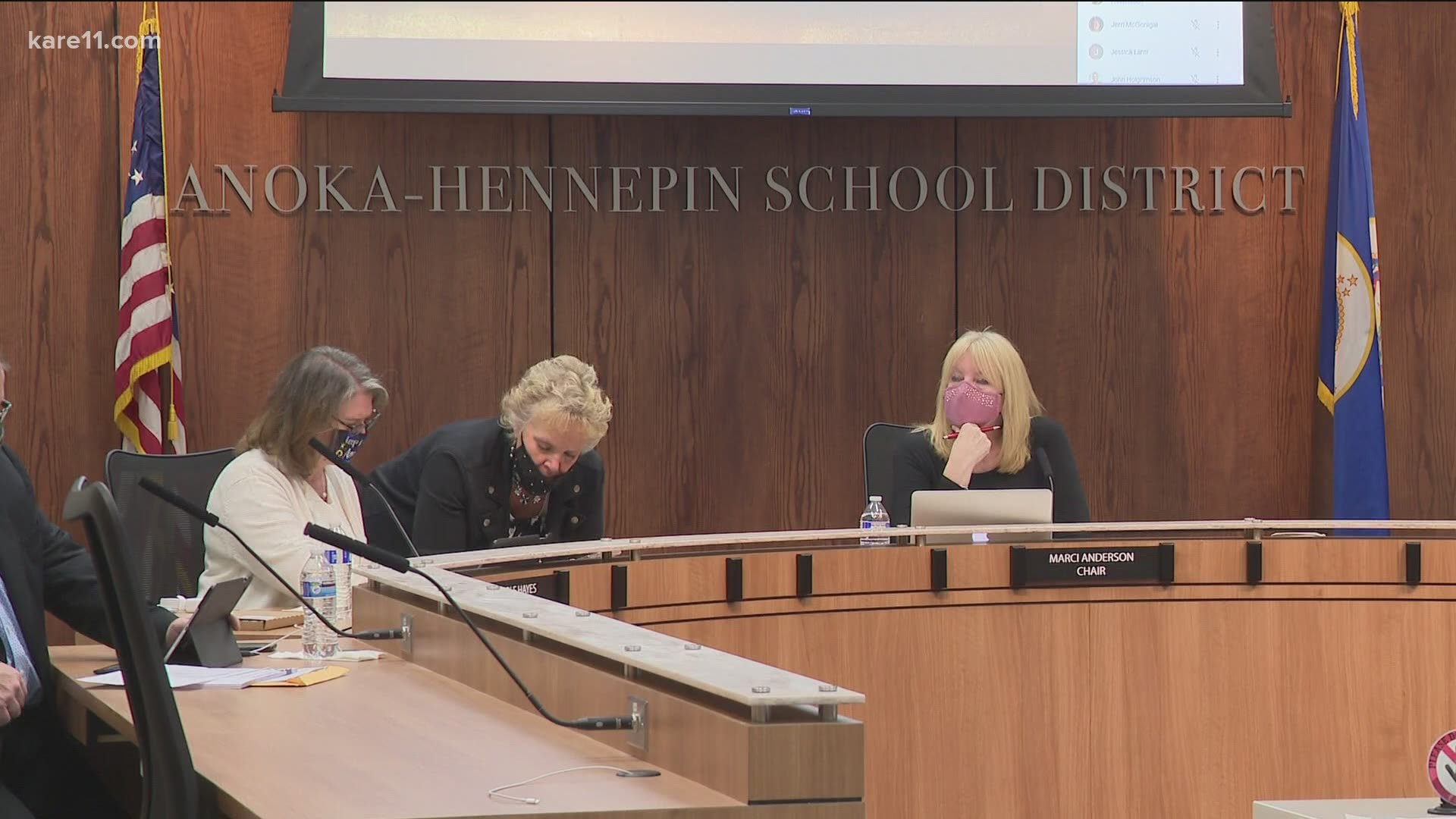MINNEAPOLIS — The games will go on for athletes in Minnesota's largest school district ... at least for now.
The Anoka-Hennepin school board abruptly reversed its superintendent's plans to suspend high school and middle schools sports and activities on Monday night, following a move to distance-only learning for high school and middle school.
The board voted 5-1 to extend activities and athletics, following a parent-led protest, and uncertainty about what the state actually requires of districts.
"There's confusion," said school board member Jeff Simon. "I would like to propose that the board adopt the position and direct Superintendent Law to continue activities until we receive specific direction."
On Tuesday, Heather Mueller, deputy commissioner of the Minnesota Department of Education, says no specific direction is actually necessary.
Mueller said the confusion among the administration and the board likely arose because county-wide data shows that Anoka County currently exceeds thresholds for COVID case rates for in-person and hybrid middle and high school instruction. However, she says that Hennepin County does not exceed that threshold, and she says the state no longer uses county data as the only metric when guiding schools.
"This summer we said that we would start with the county-level data," Mueller said. "It was the only thing that we really knew as we were trying to walk back into the school year from being out since March. We also said that, at some point in time, we are going to be able to shift from using only that county-level data, to also being able to really look at that community level data as well as the school level data, to see what the spread was looking like in a variety of settings."
Mueller says the state never directed Anoka-Hennepin to move into distance learning. Instead, during the Monday board meeting, Superintendent David Law, said staffing levels dictated it.
"It used to be that (staff) would miss a day or two," Law said. "But now they're out for 7 days, and when we're having that rolling number of employees out, we're starting to see challenges across our system."
Mueller says that type of local decision making is what state leaders are looking for.
"If we are really living our values of maintaining the safety, health and wellness of students, and we are prioritizing in person learning, then that's what that scalpeled and nuanced approach really give us the opportunity to do," she said.
Kent Erdahl: "So the state doesn't have any issues with the district deciding to continue with sports for right now?"
Mueller: "That is correct."
Erdahl: "At what point does it become an issue?"
Mueller: "If it looks as though we are seeing increases in spread in students - and we may see that in students that are participating in athletics and activities - if we are seeing that in their community, then we would go back and have that conversation."
With the increases in community spread happening across the state, it's a conversation many districts could soon be having.
"Yes, our athletes and our students that are participating in activities need to be on high alert," Mueller said. "But so does the rest of our community. This is happening in our communities at large and so the opportunity to keep our students and staff and families safe, and to really get our students back in person, lies with the community."

